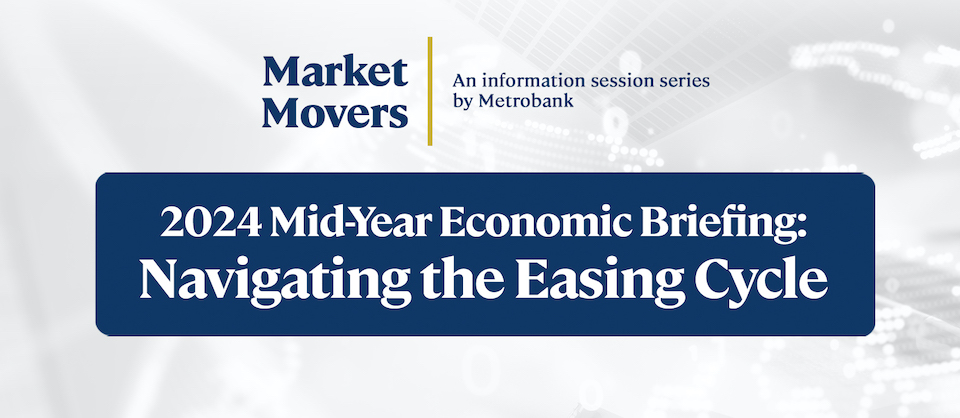Archives: CreditSights Issuer List
Access this content:
If you are an existing investor, log in first to your Metrobank Wealth Manager account.
If you wish to start your wealth journey with us, click the “How To Sign Up” button.

Fundamental View
AS OF 21 Mar 2025Korea National Oil Corp’s credit profile is underpinned by its integral link to and highly strategic policy role for the Korean government; its credit rating is equalized to Korea’s sovereign rating.
KOROIL’s standalone credit profile is weighed down by its smaller scale compared to other Asian national oil producers, its lack of downstream integration, elevated leverage and a low cash coverage of short-term debt.
That said, we are not overly concerned as we take comfort in its highly strategic policy role to the Korean government, which translates into strong government financial support (codified in law under the KNOC Act) and enables KOROIL to enjoy robust access to both domestic and overseas funding channels.
Business Description
AS OF 21 Mar 2025- In FY24, KOROIL derives its revenues from oil & gas sales (91% of revenues), oil stockpiling (7%), and others including petroleum distribution (1%).
- The oil and gas sales segment is responsible for exploration and development of domestic and overseas resources and sales of crude oil. KOROIL has 29 E&P projects in 15 countries (including Canada, UK, US, Libya, Kazakhstan, Vietnam and UAE), with total production capacity of 136 mboe/day and proven reserves of 931 mmboe. It owns nine strategic petroleum reserve facilities across South Korea with total capacity of 146 mmboe and total reserves of 99.5 mmboe. ME/Asia, Americas and Europe/Africa account for 40%, 33% and 27% of its daily output volume respectively. That said, its daily production capacity (136 mboe) is relatively small compared to its Asian E&P peers, such as CNOOC, CNPC and Sinopec which produce 1-3 mmboe per day; it is not active in the mid-stream oil refinery segment, unlike the other national oil companies in Asia.
- KOROIL maintains oil stockpile of 115 days of net imports, higher than France (82 days), Germany (91 days) and comparable to Japan (120 days).
- Similar to other Korean quasi-sovereign corporates, the Ministry of Trade, Industry and Energy, and the Ministry of Economy and Finance of the Korea government supervise KOROIL's budgeting, business planning and financial performance, and appoint its president, auditors and nonstanding directors of the board.
Risk & Catalysts
AS OF 21 Mar 2025Compared to Chinese national oil companies, such as Sinopec and CNPC, KOROIL is less diversified with limited mid and downstream operations such as refining, chemicals, sales and marketing. This makes the firm’s profitability more vulnerable to cyclical oil & gas prices. A substantial decline in oil and gas prices will have a negative impacts on KOROIL’s topline and also lead to impairment losses on its assets.
Pursuant to the June 2016 Government Plan, KOROIL has developed and is implementing a plan for the sale of its interests in less profitable overseas E&P projects, including projects with unsuccessful explorations, less-than-expected reserves and subject to geopolitical/political uncertainties, and could result in asset write-offs.
As majority of KOROIL’s E&P assets are located offshore, its business performance is subjected to exchange rate fluctuations and regional geopolitical risks.
Key Metric
AS OF 21 Mar 2025| KRW bn | FY20 | FY21 | FY22 | FY23 | FY24 |
|---|---|---|---|---|---|
| Debt to Book Cap | 113.2% | 116.5% | 112.4% | 111.4% | 110.2% |
| Net Debt to Book Cap | 107.1% | 110.6% | 107.6% | 107.1% | 108.1% |
| Debt to Equity | (856.4%) | (704.6%) | (903.7%) | (976.5%) | (1,083.4%) |
| Gross Leverage | 20.0x | 15.9x | 5.8x | 7.8x | 8.5x |
| Net Leverage | 18.9x | 15.1x | 5.6x | 7.5x | 8.3x |
| Interest Coverage | 1.6x | 2.3x | 5.9x | 4.0x | 3.6x |
| EBITDA Margin | 38.0% | 46.8% | 67.7% | 60.4% | 58.3% |
CreditSight View Comment
AS OF 22 Sep 2025We have an Outperform recommendation on Korea National Oil Corp. We expect the company’s government shareholding and strong policy role, and the resulting excellent funding access will continue to mitigate its elevated leverage and low cash coverage of short-term debt. We like KOROIL for high-quality carry, and we view its curve as attractive compared to other Korean quasi sovereigns, BBB-rated Korean IG corporates and Chinese quasi-sovereigns.
Recommendation Reviewed: September 22, 2025
Recommendation Changed: November 06, 2023
Featured Issuers
Bank of Philippine Islands

SK Hynix

Hyundai Motor



How may we help you?
Search topics about wealth insights and investments.Access this content:
If you are an existing investor, log in first to your Metrobank Wealth Manager account.
If you wish to start your wealth journey with us, click the “How To Sign Up” button.

Fundamental View
AS OF 20 Mar 2025- SMIC (SM Investments Corporation) is the obligor for the SMPM 29 bond. This means SMIC is the party (individual or entity) that has a legal or contractual obligation to make payments (principal and interest) on the SMPM 29 bond to the bondholder.
- We continue to be optimistic about the growth of SMIC given its net income growth of 9% year-on-year (y/y) in Q3 2024. Credit quality remains strong given its net debt to equity ratio of 53.84% along with its dominant market position in multiple sectors.
Featured Issuers
Bank of Philippine Islands

SK Hynix

Hyundai Motor



How may we help you?
Search topics about wealth insights and investments.Access this content:
If you are an existing investor, log in first to your Metrobank Wealth Manager account.
If you wish to start your wealth journey with us, click the “How To Sign Up” button.

Country Overview
AS OF 19 Mar 2025- Mexico, the second largest economy in Latin America and among the world’s top 15, generated an estimated GDP of USD 1.79 trillion in 2023. (World Bank, 2023).
- While the World Bank classifies Mexico as an “Upper-Middle Income, Developing” economy with a per capita GDP of USD 24,766.6 (2023), MSCI’s 2024 Market Classification Review designates it as an Emerging Market, indicating that it is adequate but still developing.
- Though a net importer, Mexico boasts a robust export sector, primarily in petroleum, digital processing units, and automobiles, which generated approximately USD 82.8 million in revenue (WITS, 2022).
- This economic activity is largely fueled by the services sector, contributing roughly 60% to GDP, and an increasingly skilled, yet affordable, workforce (Global Finance Magazine, 2024).
Featured Issuers
Bank of Philippine Islands

SK Hynix

Hyundai Motor



How may we help you?
Search topics about wealth insights and investments.Access this content:
If you are an existing investor, log in first to your Metrobank Wealth Manager account.
If you wish to start your wealth journey with us, click the “How To Sign Up” button.

Fundamental View
AS OF 27 Feb 2025- Security Bank is the 7th largest bank in the Philippines by total assets and was established on June 18, 1951. Its dollar bonds provide better yield pickup compared to its nearest comparable. We remain comfortable with the bond given Security Bank’s total capital ratio of 14.20%, which is 400 basis points above the minimum regulatory hurdle, which can buffer modest credit losses in its loan portfolios should macroeconomic headwinds worsen.
Business Description
AS OF 27 Feb 2025- Security Bank is the 7th largest bank in the Philippines by total assets and was established on June 18, 1951. Security Bank’s businesses include wholesale banking, financial markets, and retail banking. The bank provides commercial banking services such as deposit products, loans and trade finance, domestic and foreign fund transfers, treasury, foreign exchange, and trust services.
- Security Bank's loan portfolio is 32% consumer & MSME, 28% middle market, and 40% corporate as of 3Q 2024.
Risk & Catalysts
AS OF 27 Feb 2025- Any rating downgrade of the Philippine sovereign would have a negative impact on Security Bank.
- Given the current rate cut environment that drives funding costs lower, Its strategy to aggressively capture market share in the retail and MSME segment might allow the bank to deliver faster growth and higher net interest income margin.
- Rapid expansion on higher yielding retail and MSME segments could worsen asset quality and increase credit costs.
Featured Issuers
Bank of Philippine Islands

SK Hynix

Hyundai Motor



How may we help you?
Search topics about wealth insights and investments.Access this content:
If you are an existing investor, log in first to your Metrobank Wealth Manager account.
If you wish to start your wealth journey with us, click the “How To Sign Up” button.

Country Overview
AS OF 27 Feb 2025- Saudi Arabia is a key player in the global economy and one of the world’s largest oil producers and exporters.
- In 2023, the Kingdom’s total exports reached USD 300 billion, driven primarily by crude petroleum, refined petroleum, ethylene polymers, and polypropylene polymers.
- While traditionally reliant on oil, Saudi Arabia is actively diversifying its economy, investing in sectors such as technology, tourism, entertainment, and financial services.
Macro Fundamentals
AS OF 27 Feb 2025- The country's strong oil revenues provide a stable fiscal foundation, supporting economic growth and development initiatives.
- Prudent fiscal policies and government-led economic reforms, including Vision 2030, are driving long-term economic transformation.
- Saudi Arabia’s sovereign wealth funds and investment-grade credit ratings reinforce its financial stability and resilience in global markets.
Featured Issuers
Bank of Philippine Islands

SK Hynix

Hyundai Motor



How may we help you?
Search topics about wealth insights and investments.Access this content:
If you are an existing investor, log in first to your Metrobank Wealth Manager account.
If you wish to start your wealth journey with us, click the “How To Sign Up” button.

Fundamental View
AS OF 29 Feb 2024Toyota’s slower ramp of battery electric vehicle (BEV) production and sales relative to its peers was a common investor concern a year ago. However, with the recent slowdown in consumer adoption of BEVs in North America and Europe and Toyota’s dominance in the hybrid electric vehicle (HEV) market, those concerns have abated, at least for the time being. Importantly, Toyota management has indicated its profitability of its HEV portfolio is on par with its ICE portfolio profitability. We continue to believe that Toyota’s market leading position in HEVs provides consumers with a more eco-friendly option than traditional ICE vehicles that can serve as a bridge to EVs while the charging infrastructure is built out and the cost of producing EVs is reduced.
Business Description
AS OF 29 Feb 2024- Toyota Motor Corp. (TMC) engages in the manufacture and sale of motor vehicles and parts. The Financial Services segment offers purchase or lease financing to Toyota vehicle dealers and customers. It also provides retail leasing through lease contracts purchased by dealers. The company was founded by Kiichiro Toyoda on August 28, 1937, and is headquartered in Toyota, Japan. In July 2000, the company established Toyota Financial Services Corporation (TFSC), a wholly owned subsidiary, to oversee the management of its finance companies worldwide.
- Toyota Financial Services Corporation (TFSC), a wholly owned subsidiary of TMC, oversees the management of Toyota's finance companies worldwide. Toyota Motor Credit Corporation (TMCC) is the company’s principal financial services subsidiary in the United States and is an indirect wholly owned subsidiary. Under terms of the credit support agreement between TFSC and TMCC, TFSC agrees to: (1) maintain 100% ownership of TMCC; (2) cause TMCC and its subsidiaries to have a tangible net worth of at least $100,000; (3) make sufficient funds available to TMCC so that it will be able to service the obligations arising out of its own bonds, debentures, notes and other investment securities and commercial paper. The terms of the credit support agreement between TMC and TFSC are very similar to the terms of the TFSC and TMCC credit support agreement.
Risk & Catalysts
AS OF 29 Feb 2024Toyota Motor Credit Corporation (TMCC) credit metrics stable. TMCC F3Q24 earnings before taxes increased 50% YoY and 3x sequentially. At F3Q24 the delinquency rate expanded 10 bp YoY to 0.9%, nearly double pre-pandemic levels, while the retail charge-off rate expanded 10bp YoY to 0.7%. The company notes that changes in interest rates or unemployment could increase credit losses and additional provisioning. Additionally, elevated prices and high borrowing costs have impacted some consumers’ ability to make scheduled payments resulting in an increase in consumer delinquencies and charge-offs.
Key Metric
AS OF 29 Feb 2024| ¥ bn | FY20 | FY21 | FY22 | FY23 | F3Q24 |
|---|---|---|---|---|---|
| Total Company Earning Assets | 110,621 | 116,546 | 117,659 | 120,018 | 129,320 |
| Cash and Investments | 6,790 | 8,195 | 7,670 | 6,398 | 6,458 |
| Total Liquidity | 31,390 | 35,895 | 36,070 | 33,498 | 35,058 |
| Unsecured Debt | 83,172 | 85,513 | 82,288 | 78,949 | 85,744 |
| Secured Debt | 14,568 | 24,212 | 26,864 | 32,736 | 33,262 |
| Total Debt | 97,740 | 109,725 | 109,152 | 111,685 | 119,006 |
| Allowance % Retail Rece. | 0.86% | 1.64% | 1.66% | 1.83% | 1.81% |
| Allowance / Net Charge-offs | 1.58x | 4.50x | 6.68x | 3.03x | 2.56x |
| Net Charge-offs % Avg. Receivable | 0.56% | 0.39% | 0.26% | 0.63% | 0.72% |
| 30+ Day Delinquency Rate | 1.8% | 1.2% | 1.8% | 2.3% | 3.1% |
CreditSight View Comment
AS OF 13 May 2024We reiterate our Underperform recommendations on notes of Toyota Motor Co. (TOYOTA: A1/A+/A+; S/S/S) and Toyota Motor Credit Corporation (TMCC: A1/A+/A+; S/S/S) based primarily on relative value. Toyota reported record profit in FY24 and announced increased investments in labor, suppliers, and BEVs in FY25 that it expects to reduce operating profit 20%. We applaud the investments that we believe should further its new energy vehicle offerings well beyond its hybrid electric vehicles (HEVs), which account for more than one-third of its sales. We believe the Toyota bond complex is fairly valued at current levels but will continue to underperform the broader market and the A-rated index owing to its high-A credit rating and short duration.
Recommendation Reviewed: May 13, 2024
Recommendation Changed: January 13, 2023
Featured Issuers
Bank of Philippine Islands

SK Hynix

Hyundai Motor



How may we help you?
Search topics about wealth insights and investments.Access this content:
If you are an existing investor, log in first to your Metrobank Wealth Manager account.
If you wish to start your wealth journey with us, click the “How To Sign Up” button.

Fundamental View
AS OF 01 Jan 1970Business Description
AS OF 01 Jan 1970Risk & Catalysts
AS OF 01 Jan 1970Notice: Undefined index: keyMetrics in /home/ubuntu/wealthinsights.metrobank.com.ph/web/app/themes/mb-wealth-insights/template-parts/components/keymetrics_table.php on line 20
Notice: Trying to access array offset on value of type null in /home/ubuntu/wealthinsights.metrobank.com.ph/web/app/themes/mb-wealth-insights/template-parts/components/keymetrics_table.php on line 20
Notice: Trying to access array offset on value of type null in /home/ubuntu/wealthinsights.metrobank.com.ph/web/app/themes/mb-wealth-insights/template-parts/components/keymetrics_table.php on line 20
Notice: Undefined index: keyMetrics in /home/ubuntu/wealthinsights.metrobank.com.ph/web/app/themes/mb-wealth-insights/template-parts/components/keymetrics_table.php on line 21
Notice: Trying to access array offset on value of type null in /home/ubuntu/wealthinsights.metrobank.com.ph/web/app/themes/mb-wealth-insights/template-parts/components/keymetrics_table.php on line 21
Notice: Trying to access array offset on value of type null in /home/ubuntu/wealthinsights.metrobank.com.ph/web/app/themes/mb-wealth-insights/template-parts/components/keymetrics_table.php on line 21
Notice: Undefined index: keyMetrics in /home/ubuntu/wealthinsights.metrobank.com.ph/web/app/themes/mb-wealth-insights/template-parts/components/keymetrics_table.php on line 22
Notice: Trying to access array offset on value of type null in /home/ubuntu/wealthinsights.metrobank.com.ph/web/app/themes/mb-wealth-insights/template-parts/components/keymetrics_table.php on line 22
Notice: Trying to access array offset on value of type null in /home/ubuntu/wealthinsights.metrobank.com.ph/web/app/themes/mb-wealth-insights/template-parts/components/keymetrics_table.php on line 22
Key Metric
AS OF 08 Oct 2025Notice: Undefined index: keyMetrics in /home/ubuntu/wealthinsights.metrobank.com.ph/web/app/themes/mb-wealth-insights/template-parts/components/keymetrics_table.php on line 32 Notice: Trying to access array offset on value of type null in /home/ubuntu/wealthinsights.metrobank.com.ph/web/app/themes/mb-wealth-insights/template-parts/components/keymetrics_table.php on line 32 Notice: Trying to access array offset on value of type null in /home/ubuntu/wealthinsights.metrobank.com.ph/web/app/themes/mb-wealth-insights/template-parts/components/keymetrics_table.php on line 32 |
|---|
CreditSight View Comment
AS OF 01 Jan 1970Recommendation Reviewed: January 01, 1970
Recommendation Changed: January 01, 1970
Featured Issuers
Bank of Philippine Islands

SK Hynix

Hyundai Motor










 DOWNLOAD
DOWNLOAD



